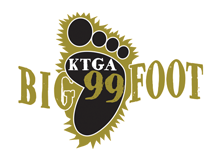November 10, 2023 |
Photo – Heart Mountain Relocation Center outside of Powell, WY – Courtesy Buffalo Bill Center
A terrible chapter of American history ended on this date, November 10, 1945. Heart Mountain Internment Center is closed two months after the war with Japan ended.
Heart Mountain Internment Center opened on August 2, 1942. Three years of operation on land owned by the public, or Bureau of Land Management, the BLM. Evacuees came to the Heart Mountain Relocation Center by train from California, Washington, and Oregon.

Photo – Japanese Americans loading onto train headed to Wyoming – Courtesy Densho Encyclopedia
The center was located on two terraces of the Shoshone River on a flat, treeless landscape covered in buffalo grass and sagebrush. The open, treeless landscape was hot in summer and cold and windy in the winter. Nine guard towers surrounded the residential portion of the camp with barbed wire fencing running around the perimeter.

Photo – Guard towers at Heart Mountain relocation camp – Courtesy Cody Yellowstone
At it’s largest, the camp held more than 10,000 residents. The camp then, was bigger than Rawlins, today. Heart Mountain was the third largest populated area in Wyoming at the time. The two larger areas being Cheyenne and Casper.
A Democrat President ushered in the camp, with his signature…Franklin D. Roosevelt. The case for the mass center had been made largely by West Coast politicians. One of the primary movers was Democrat Governor of California, Culbert Olsen. Olsen was known as the first atheist governor in the nation. Governor Olsen, a loyal Roosevelt Democrat, testified before Congress on March 6, 1942, saying, “Because of the extreme difficulty in distinguishing between loyal Japanese Americans, and there are many who are loyal to this country, and those other Japanese whose loyalty is to the Mikado. I believe in the wholesale evacuation of the Japanese people from coastal California.” Olsen lost the 1942 election to California Attorney General (and later Supreme Court Justice) Earl Warren, by a wide margin. Olsen would later blame the Roman Catholic Church for his loss.
In Wyoming, Governor Nels Smith warned that the state “will not stand for being California’s dumping grounds”.
Powell Tribune editor, Raymond Baird, took a more positive view of the development. Baird welcomed the influx of laborers, many of whom took jobs in the fields. Many viewed the project as a necessary patriotic burden in support of national security.
The first internees arrived at Heart Mountain on August 12, 1942. The facility consisted of 450 barracks, each containing six apartments. The largest apartments were simply single rooms measuring 24 feet by 20 feet. Perhaps the most easily identifiable features of the barracks were the tarpaper exteriors. While each unit was eventually outfitted with a potbellied stove, none had bathrooms. Internees used shared latrines. None of the apartments had kitchens. The residents ate their meals in mess halls. Life was mostly miserable and hard. During the first winter, 32 boys, who were internees at the camp, were arrested for sledding in the hills beyond the camp’s boundary.

Photo – A room, or apartment, at Heart Mountain – Courtesy Fortwiki.com
Opinions varied widely about the internees. LL Newton, editor of the Wyoming State Journal, expressed outrage over the disregard for the constitutional rights of the American-born Japanese. Others, like Wyoming’s Republican US Senator, EV Robertson, felt the internees were living too luxuriously at the expense of taxpayers.
Interactions between the internees and Powell residents were mostly peaceful, with some spotty trouble here and there. Internees would frequent stores in Cody and Powell while on temporary leave and supplied labor to area farms and ranches.

Photo – An internee working a local field – Courtesy Densho Encyclopedia
After the Heart Mountain High School was built, local varsity sports teams entered through the barbed wire perimeter to play games against the Heart Mountain Eagles. Scouting was a popular youth activity at Heart Mountain. The camp boasted Boy Scout and Girl Scout troops.
By the end of World War II, 385 Heart Mountain internees had been inducted into the military. During the war, eleven were killed and fifty-two wounded.
The lifting of the West Coast Ban in January of 1945, spurred evacuation of the relocation centers. By November 10th, this date, in 1945, the last internee left Heart Mountain.
Also on this date, November 10th, 1945, the Elk Mountain camp closed.
In 1980, the US Congress formed the Commission on Wartime Relocation and Internment of Civilians. The subsequent investigation included the testimony of 750 witnesses and a Congressional report published in 1983 titled Personal Justice Denied. Finding the incarceration to be unwarranted, the report recommended an official apology be made, as well as redress payments of $20,000 given to survivors of the camps in addition to the creation of an education fund to increase public awareness about the camps.
One interesting story of a friendship made between a young internee and a young Boy Scout from Cody would have important ramifications in the coming years. During a meeting of two Boy Scout troops, Norman Mineta met a young man named Alan Simpson. Years later, when Mineta was representing his California district in the US House of Representatives and Simpson was representing Wyoming in the US Senate, the two sponsored the Civil Liberties Act of 1988. President Ronald Regan signed the legislation, enacting into law, the recommendations in the report.

Photo – Boy Scout Troop of Heart Mountain, WY – Courtesy wyohistory.org













